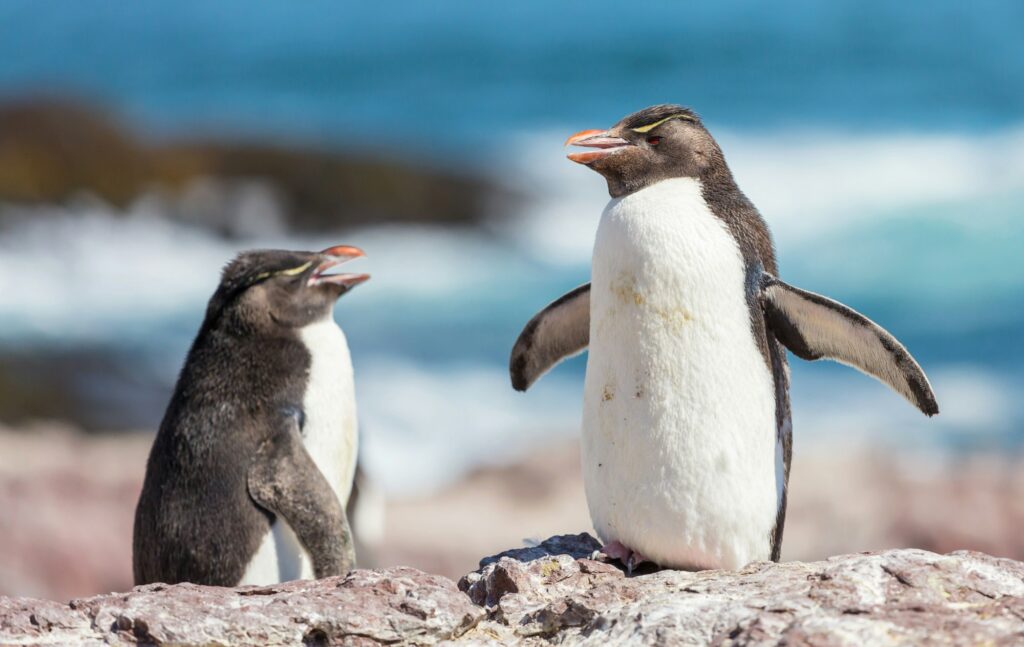13 Facts About Rockhopper Penguin

The rockhopper penguin is one of the most endearing yet enduring species of penguinmoseleyi These crested penguins inhabit a variety of islands in the southern hemisphere, adapting to the rocky shorelines and diverse habitatsfilholi Read on for 13 fascinating facts about rockhopper penguins.
Where Do Rockhopper Penguins Live?
Rockhopper penguins live on subantarctic islands with cold climates and rocky shorelines across the southern Atlantic, Indian, and Pacific Oceans. Major populations are found on the Falkland Islands, Tristan da Cunha, the rockhoppers are the smallest southern Chile coast, and other islands in the area.
They nest in burrows in tussock grass or sometimes on the open ground. The location of their breeding colonies are critical for the survival of penguin species, particularly in the Antarctic region. depends on the amount of shelter available from rock crevices and tall grasses as well as access to the ocean.
The Mating Rituals of Rockhopper Penguins

During mating season, male rockhopper penguins attract females by waving their head crests and showing off their prominent red eyes. Females select their mate based on the vigor of this courtship display.
Once pairs form, they return to nesting sites from previous years to breed. Both parents share responsibility for incubating the two eggs laid each season. They take turns sitting on the eggs while the other mate goes out to sea to feed on krill, squid, and other crustaceans.
Interesting Facts About Rockhopper Penguin Feathers and Characteristics
Rockhopper penguins have distinctive feather crests and ornamentation. The Southern rockhopper penguin has longer, more dramatic yellow crest feathers, while the Northern rockhopper has shorter and redder crest feathers.
These crests not only look interesting but also help distinguish the penguin species from one another. rockhoppers regulate their body temperature. Males also use their crest feathers to attract mates among the penguin species.
Rockhoppers get their name from their ability to hop from rock to rock with the help of their sturdy legs and webbed feet. Their waterproof feathers and ample fat storage also allow them to swim and float effectively as well.
Rockhopper Penguins and Their Dietchrysocome What Do These Fascinating Animals Eat?

The diet of rockhopper penguins consists mainly of krill, though they also consume other smaller prey, using their beak effectively during hunting sessions. crustaceans like shrimp and small squid. They capture this nutritious food by diving underwater and using their wings to propel themselves, sometimes even using their beak to grasp slippery prey.
Unfortunately, rockhopper penguins face threats from overfishing and pollution which reduces available food supplies. Conservation efforts aim to sustain krill populations and combat detrimental human activities to protect the 1.5 million rockhopper penguins living in the wild.
Rockhopper Penguin Reproduction: From Laying Eggs to Raising Chicks
The breeding season starts with male rockhoppers arriving at nesting grounds to prepare perfect nests to attract females. Once mates pair up, the females lay two eggs.
Both parents take turns keeping the eggs warm while the mate is out feeding for up to a month in the harsh conditions of Antarctica. When the northern rockhopper penguin chicks hatch they are cared for by both parents who take turns protecting, feeding and keeping them warm for about 3 months.
During this time the growing juveniles face threats from predators before they learn how to fend for themselves in the ocean.
Important Rockhopper Penguin Facts for Kids
Here are some key facts for kids to understand the lives of amazing rockhopper penguins:
- They are small, crested penguins named for their ability to hop rock to rock with special feathers and feet.
- Rockhoppers breed in large colonies and create nests out of grasses in the antarctic regions. Two parents take turns caring for the eggs then feeding the chicks.
- Their diet consists of krill, fish and other sea creatures. But pollution threatens their food supply.
- Kids can help rockhopper penguins by learning more about them and supporting conservation groups.
Learning fun facts about rockhopper penguins through games, books and videos makes it easy for kids to explore the lives of these fascinating animals!





